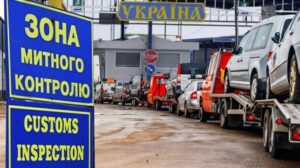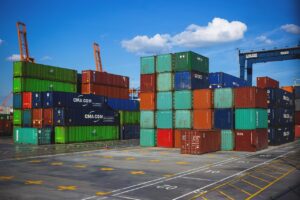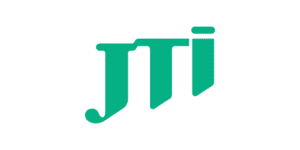
On the Ukrainian-Hungarian section of the border in the Transcarpathian region, there is a significant increase in cars to enter Ukraine, said the head of the Transcarpathian regional state administration Viktor Mikita.
“In the case of Hungary, these queues stretched for several kilometers and sometimes reach 800 cars. The situation on the Slovak-Ukrainian border is somewhat better, but it also causes concern. People are in vehicles for several days, in the heat and without proper sanitary conditions,” Mikita wrote on Facebook.
He noted that queues are formed only for vehicles that are sent to Ukraine for customs clearance. General traffic, tourists and transit moves calmly, there are almost no queues.
“As for the queue that has arisen, there are a number of objective and subjective factors. Traffic has increased hundreds of times, cars for customs clearance go not only from Hungary, but also from the Baltic states, Poland and others. A significant part of the car does not have properly executed documents, which greatly complicates the pass and registration. There are other operational factors that require immediate optimization,” Mikita said.

The Cabinet of Ministers has expanded the list of checkpoints through which it is allowed to transport vehicles purchased abroad for the period of martial law, according to a government decree dated June 14, 2022.
According to it, the government allowed the import of imported cars through a number of sea checkpoints, including the Black Sea Fishing Port, the Black Sea Shipyard, the Odessa Commercial Sea Port, the Pivdenny seaport, the Reniysky, Ust-Danubsky, Belgorod-Dnestrovsky seaports, as well as the ferry complex “Orlovka”.
Earlier, the Cabinet of Ministers limited the checkpoints for moving imported cars to three – Ustilug, Grushev and Maly Berezny.

A situation at the customs has somewhat improved, the volume of customs clearance of goods by businesses is increasing, Minister of Finance of Ukraine Serhiy Marchenko has said.
“Compared to March, customs added a little: in March, the drawdown of customs revenues was 80%, now it is about 75%. There are some improvements. Taking into account the current benefits for customs clearance of imports, we can say that the situation has improved somewhat and business is increasing the volume of goods cleared,” the minister said in an interview with Interfax-Ukraine, adding that the data require a deeper analysis.
According to him, customs revenues to the budget amounted to UAH 8.3 billion in April, while tax revenues almost reached UAH 45 billion, and another UAH 22 billion went to the budget as grant assistance.

Companies with the status of an authorized economic operator (AEO) at the moment cannot yet take advantage of all its opportunities, since bylaws and algorithms for the implementation of preferences granted to AEO status holders have not been developed.
Director General of PrJSC JT International Ukraine (Kremenchuk, Poltava region) Viktor Ivanov told Interfax-Ukraine agency on Tuesday about the influence of this status on the activities of the tobacco manufacturer JTI Ukraine, the first and only holder of the AEO status in the country.
“The AEO status has not yet become a real competitive advantage, although there is indeed an image advantage in relations with the customs authorities. Even before the AEO status was obtained, we had a constructive dialogue and effective cooperation with the customs. Now, there are new mutual opportunities. We are waiting for customs simplifications begin to be fully realized,” Ivanov said.
Legally, possession of the status of the AEO, as a kind of “certificate of trust” to the enterprise from the side of customs, provides it with significant advantages and simplifications in its work. In particular, the out-of-turn registration of customs declarations, a simplified declaration procedure by the customs authority, the use of a specially defined traffic lane at a checkpoint, etc.
Ivanov said that this status provides exclusively logistical advantages, and affects production indirectly through the acceleration of logistics (customs clearance and delivery of necessary materials, spare parts, tobacco, etc.). “In terms of logistics, in recent months we have felt that customs clearance of our goods is a priority and comes first. Also, the number of occurrences of automatic risks when importing/exporting our goods has decreased, therefore, the number of more thorough procedures for checking or inspecting goods has decreased. We believe that it was the AEO status that made it possible to reduce the number of automatic risks,” the director general said.
Ivanov said that apart from the right of priority customs clearance of goods and reduction of automatic risks during customs clearance, the company did not feel any other changes. So, for example, the announced separate traffic lanes for the transport of companies with the AEO status at customs points have not yet been equipped.
“As far as we know, there are still no bylaws, the algorithms for the implementation of these simplifications have not yet been developed. According to our information, they are still under development. Therefore, we cannot use all the advantages that the AEO status gives,” the director of JT International Ukraine said.
According to him, to improve the situation, it is necessary to accelerate the development and implementation of bylaws that provide benefits for companies with AEO status.
Ivanov also said that JTI Ukraine has repeatedly received offers from various organizations to participate in roundtables or seminars to share the experience of preparing for the assessment and the very assessment of compliance with the AEO criteria. Customs representatives also took part in these events, shared their experience and talked about the aspects that need to be paid attention to when submitting an application and self-assessment questionnaire, and the assessment procedure.
As reported, the AEO authorization program was launched in Ukraine in August 2020.